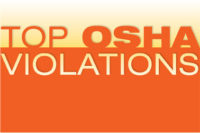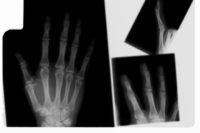 From an ASSE management roundtable at the 2012 Professional Development Confrence in Denver, June, 2012
From an ASSE management roundtable at the 2012 Professional Development Confrence in Denver, June, 2012
In the four decades since the Occupational Safety and Health Act (OSH Act) was signed into law, workplace deaths and reported occupational injuries have dropped by more than 60 percent. Yet the nation's workers continue to face an unacceptable number of work-related deaths, injuries and illnesses, most of them preventable.
These serious injuries and deaths rates are not improving at a rate similar to more minor OSHA recordable injuries. The U.S. Bureau of Labor Statistics estimates that approximately 3.3 million serious work-related injuries and about 4,300 fatalities occurred in 2009. According to the 2010 Liberty Mutual Workplace Safety Index, the direct cost of the most disabling workplace injuries and illnesses in 2008 amounted to $53.42 billion in U.S. workers’ compensation costs, more than one billion dollars per week.
Leigh et al. (1997) estimated that more than 60,000 workers die each year from occupational illnesses, and more than 850,000 develop new illnesses annually. Similarly, Steenland et al. (2003) estimated that between 10,000 and 20,000 workers die each year from cancer due to occupational exposures, and between 5,000 and 24,000 die from work-related Chronic Obstructive Pulmonary Disease.
These injury rates and cost in dollars and suffering are unacceptable.
To illustrate the problem at a company level, a division of GM had 10 workplace deaths in a year. More shocking is that 240 additional team members died off the job.
What is happening and driving these numbers?
• Why are these serious injury rates (including deaths) and associated costs so high?
• Why are the management efforts in safety and health not effective in addressing serious injuries and death?
The roundtable session brainstorming began with listing ideas, and later the group focused with value placement on key ideas. The discussion concluded with a conference call after the roundtable to further develop these ideas and explore possible solutions/next steps.
1. Establish accountability, culture and mind-set at individual level. Accountability is facilitated by management; not just the employees. It is driven by expectations of management. There is a structure needed for accountability – at the broadest level more tangible and buried. Failure to follow given safety protocol should lead to disciplinary actions.
2. Design a hierarchy top down; bottom up. Accountability trends with assignment of responsibility and visible roles… roles need to be clarified/defined otherwise it creates discontent and there is no culture of CARE [actively caring with consideration, action, resolve and engagement]
3. Develop a safety management system or frame work that addresses incident prevention.
Design a database index on accident/incident severity.
At times there is much talk on after accident activity. We need to focus on the harm index from industry to industry. We could take our ability to benchmark and work with leading indicators; not just near misses. A minor accident can lead to greater damage if root causes are left unidentified. Identify precursors to pull out serious events.
Once organization has this information it can identify the high-risk activities and be able to effectively utilize the data. Applying this data globally into a guideline followed with standards would be impactful. Design the tools to prioritize on high-potential incidents – JSAs to identify steps in those tasks and drill down to the core details
4. Hypo–potential severity and actual severity. Design corporate philosophy around trust and competence. There needs to be a balance between personal factors and job factors.
5. Could it be that we do not address the precursor – near misses? If there was a name change to “Near Miss” there possibly would be greater reporting. Calling it “great catch” may have positive impact on the current negative undertone.
6. Europe has a higher matrix of risk assessment that we in the USA need to review and draw upon.
7. Serious injuries and fatalities occur because of a lack of a] effective hazard identification, b] lack of knowledge and c] circumstances when business is unusual and this leads to serious injuries/fatalities. Companies need to manage the risk effectively. People at transactional level are responsible for strategic planning but do not have the time or expertise
8. We need to question fatal injuries and multiple injuries and not treat them as a one off.
Commonality comes into play… 12 people die on the job every day. A lot of information comes from the insurance industry and is about trending. We need to review high-end injuries… above one-half million dollars, and question what are the causal factors and trends. The commonality across exposures needs to be analyzed. Example: In driving vehicles the causal factors leading to exposure could be inattention and fatigue
9. Reference Fred Manuele: 1,200 non-routine out of design task actions + high energy = isolated and unique incidents due to lack of proper risk assessment. Identify unforgiving work tasks. We need a data base to index accidents and injuries within frequency thresholds and serious outcomes.
10. Cultural components can lead to low probability of safety feedback and high incidence outcome.
[Example of the two electrical workers working together and the journeyman not saying anything when he observed at risk behavior] Understand the precursors from risk assessment to identify what is driving incidents or causal factors. What kind of knowledge or skill sets are required and how do we minimize the exposures?
11. Fatality incidence is high with contractors that have small businesses or units. Why? Because there is a lack of prevention programs with such vendors.
12. There are different causal factors with recordable injuries versus serious injuries and fatalities. We need to expound and define this: Exposures and potential of serious injuries at local level and not corporate level. A group of persons needs to be assigned to solve this data and how would this data be employed to protect co-workers and oneself.
13. There are two separate groups of employees secondary to variance in safety systems: world class versus mediocre.
14. Parallel Path Development Model: what do we do to influence the culture once we have the data. Data will give the plan of action – otherwise there are no measurable results. It is the mining of the data that influences the culture.
15. Incidents have a high-severity potential when working in isolation in the field without coworker support. Strategic Planning Model: How do you go to those that need attention in the field?
16. Lack of experience with younger work force who do not clearly understand safety guidelines and principles, possibly due to lack of safety coaching in education curriculum.
Safety has evolved since 2002. Should baseline courses in safety be designed and available at primary school to college level? After all we have courses in history, psychology, sociology, anthropology and sociology but practical safety that could prevent injury, lives and healthcare costs is not taught in schools as an elective.
The roundtable group was very engaged in the discussion and participated wholeheartedly. The level was advanced and solution based with passionate viewpoints.
Comments Richard N Knowles, Ph.D.:
“This looked like a good roundtable. I just came out of the replacement of my right hip and was not able to attend. In my 50 years of helping to lead safety as a research chemist, supervisor, plant manager (DuPont 36 years) and consultant (17 years) I have found that having strong systems and processes in place combined with truly partnering with the people will get you to safety excellence where fatalities and other injuries are rare. This begins with the people at the top of the organization; the way in which people choose to lead is critical.
In driving top-down, about the best we can get is compliance and it is hard to sustain. When we partner with the people the safety performance significantly improves and is sustainable. When I was the plant manager at the the DuPont Plant in Belle, WV we cut our injury rates by over 96% and earnings rose by 300% as we learned to really partner. In my consulting role, I've seen this happen in hundreds of workshops. You can see more about this on my web site, www.safetyexcellenceforbusiness.com The Safety Leadership Process (TM) we describe there really works.







